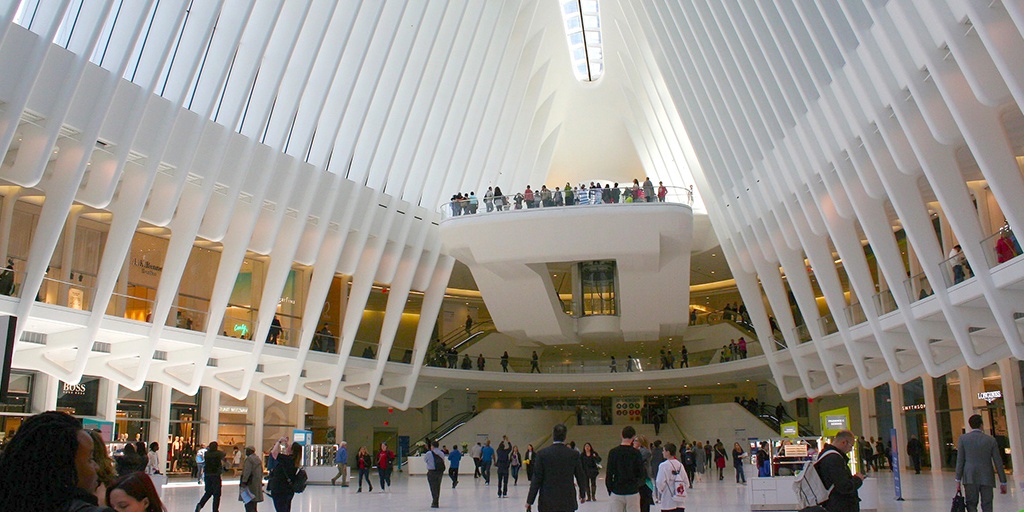Each year around the third week of May, the International Council of Shopping Centers (ICSC) hosts The Global Retail Real Estate Convention, better known as RECon. With more than 37,000 attendees and 1,200 exhibitors, it is the largest convention in the world focused on the shopping center industry. This year Milrose Consultants, a longtime member of ICSC, sent four of their experts to learn what the future holds when it comes to retail. Their trip brought surprising insight into the current state of retail and even gave a few hints as to the direction in which retail is headed.
The first half of 2017 has been a battle between giant retailers, with dozens declaring bankruptcy and the closure of more than 8,000 retail locations nationwide. Once iconic brands are seeing their market share wither or even disappear completely, while others, such as Barnes and Noble, are struggling to reinvent themselves fast enough.
“Your success in life isn’t based on your ability to simply change. It is based on your ability to change faster than your competition, customers, and business.” – Mark Sanborn
It might come as a surprise, amid gloomy headlines of storefront closings and the forfeiture of certain jobs to advances in technology, that the tone and mood of RECon remained positive. Companies are excited about the future – Though technology disrupts, it is a catalyst for changing markets, usually for the better.
Alfonso Cava, Regional Director of Sales for Milrose Consultants who attended the event, can confirm that when it comes to retail, “It [retail] is definitely not dead…Online shopping, online grocery delivery, makes people think that brick and mortar retail is dying. But it’s just changing. It’s actually becoming more consumer-friendly but in a different way.”
It turns out that retail has been evolving. The storefront closings and new technology should be considered a positive change; a change Cava says has been greatly influenced by the shopping habits of millennials, “Retail of the past was about getting bigger stores and more of them. Now, we’re going in reverse; think stores that leave smaller footprints but bigger experiences. Shoppers are not looking for items the same way they used to. Consumers have changed, their needs have changed, and with that, the retail landscape had to change.”
Having grown up with the Internet, millennials are used to, and almost expect, a certain degree of convenience when playing the role of consumer. This convenience includes the ability to have many different options from many different places and being able to expect a certain level of customer satisfaction and customization, something they will easily be able to find somewhere else if they are ever dissatisfied.
One way retailers are making themselves more convenient and customizable is by becoming what is known as ‘Omni-channel,’ which is a mix of brick and mortar, online meets in-store experience, and distribution centers. Cava gives an example of how it works, “You’ll have a flagship store because there are still shoppers who like to see, touch and feel, but utilizing all of the new technologies will add convenience. You’ll see more made-to-order options in those stores so things can become even more customized. The experience of the sale was born in the store, but customization makes it better.”
Cava says that a broad range of retailers appear to be taking advantage of new technologies and headed in the Omni-channel direction; most recently, he feels the future of brick and mortar is based on the retailer’s ability to morph and change into what consumers of today are looking for. The recent acquisition of Whole Foods by Amazon is a prime example of the diversification of what the omni-channel future holds. One of the biggest trends Cava says to look out for is the rise of food and trendy cafes within stores and shopping malls to repurpose and backfill empty space. Barnes and Noble, for example, is experimenting with adding full-service cafes within their stores that will serve food and alcohol. They are in the process of opening four test stores in 2017 and will test several different models to try and find one that rings true with this new generation of consumers.
According to Cava, “We never expected Amazon to be in the real estate game, yet they managed to push Barnes and Noble and Borders out and now Amazon is experimenting with physical stores. And we see Barnes and Noble making a comeback. Everyone is still kind of figuring out what the best formula is between e-stores and physical stores. There are a lot of unknowns, but also an opportunity for innovation. I still see the value of brick and mortar stores, and I think they will be utilized more for creating an experience while still offering products. However, their footprint will now be on a different scale.”
The entire retail industry is still coming to grips with the explosion of online commerce and how it has changed the buying habits and expectations of not only millennials, but shoppers everywhere. The future promises to be filled with a variety of new, experimental, experience-oriented retail ventures.








